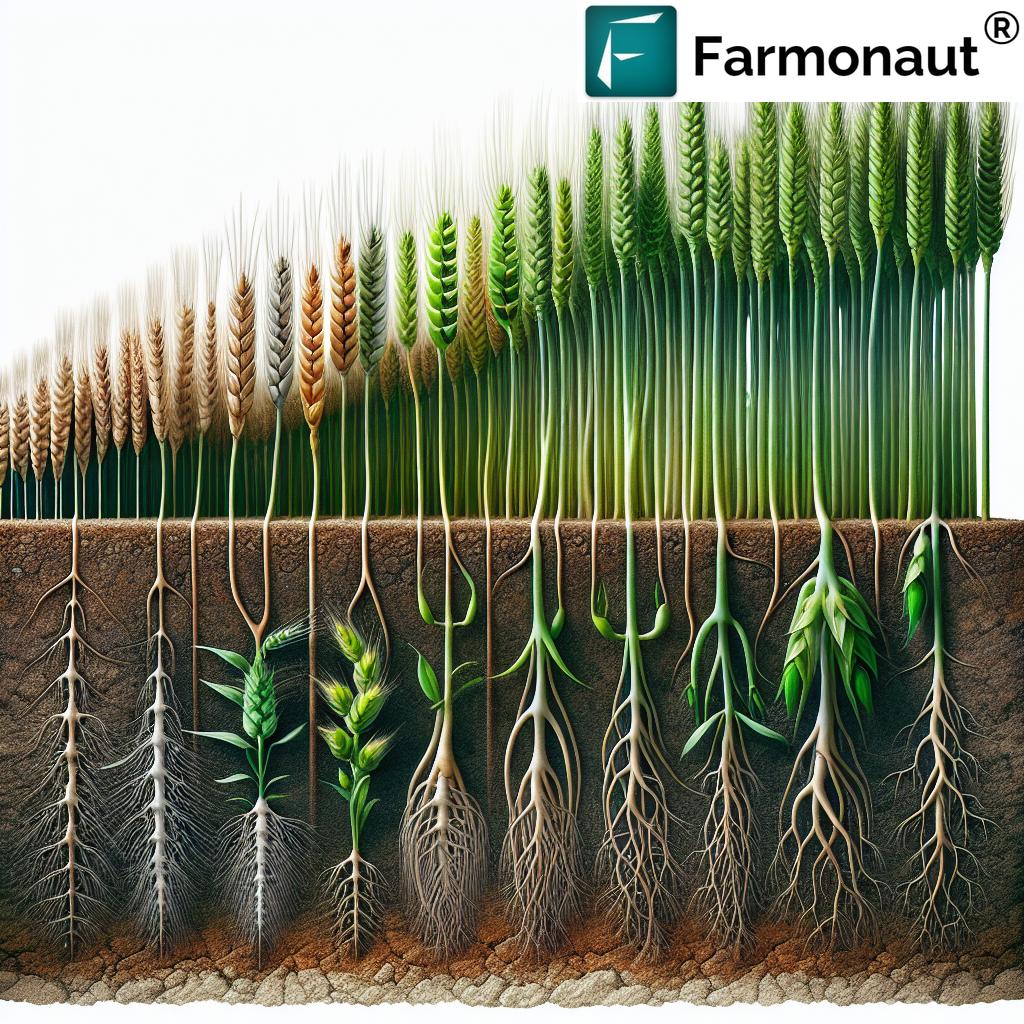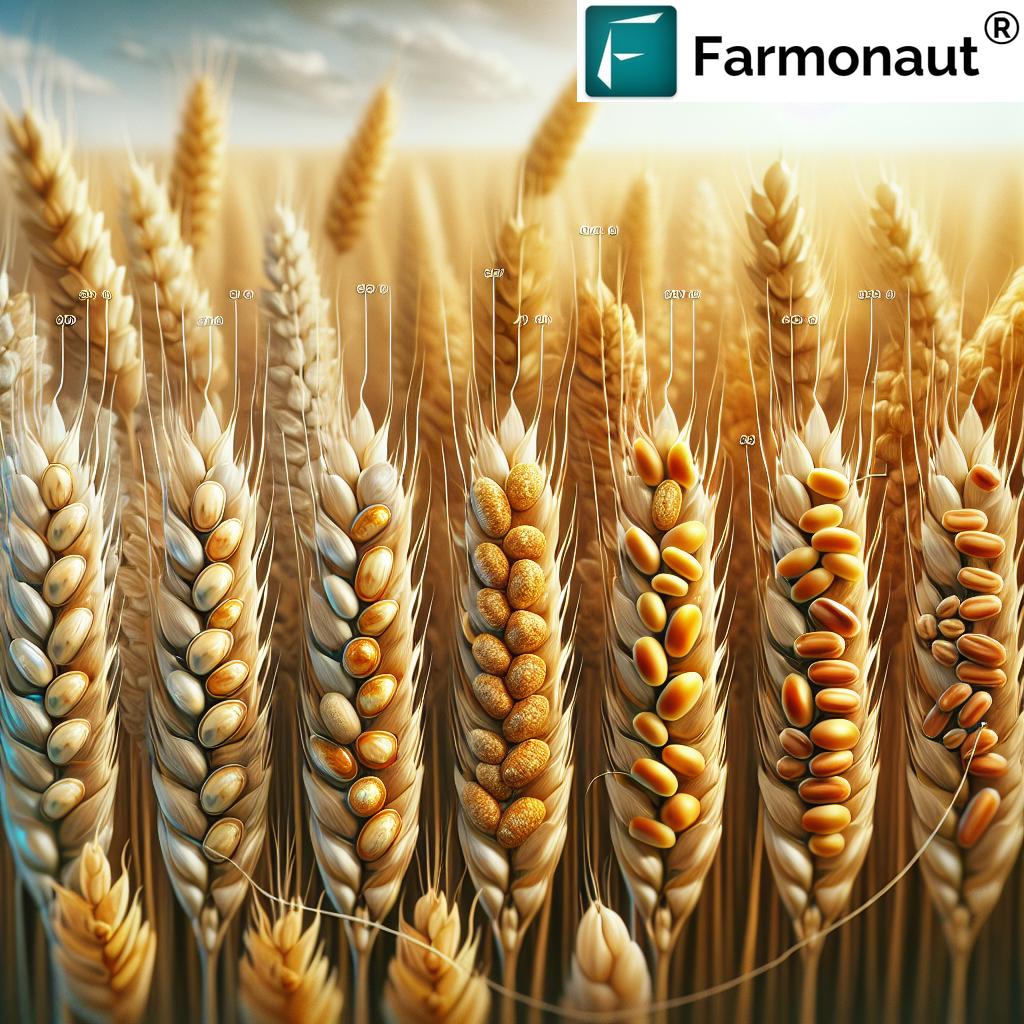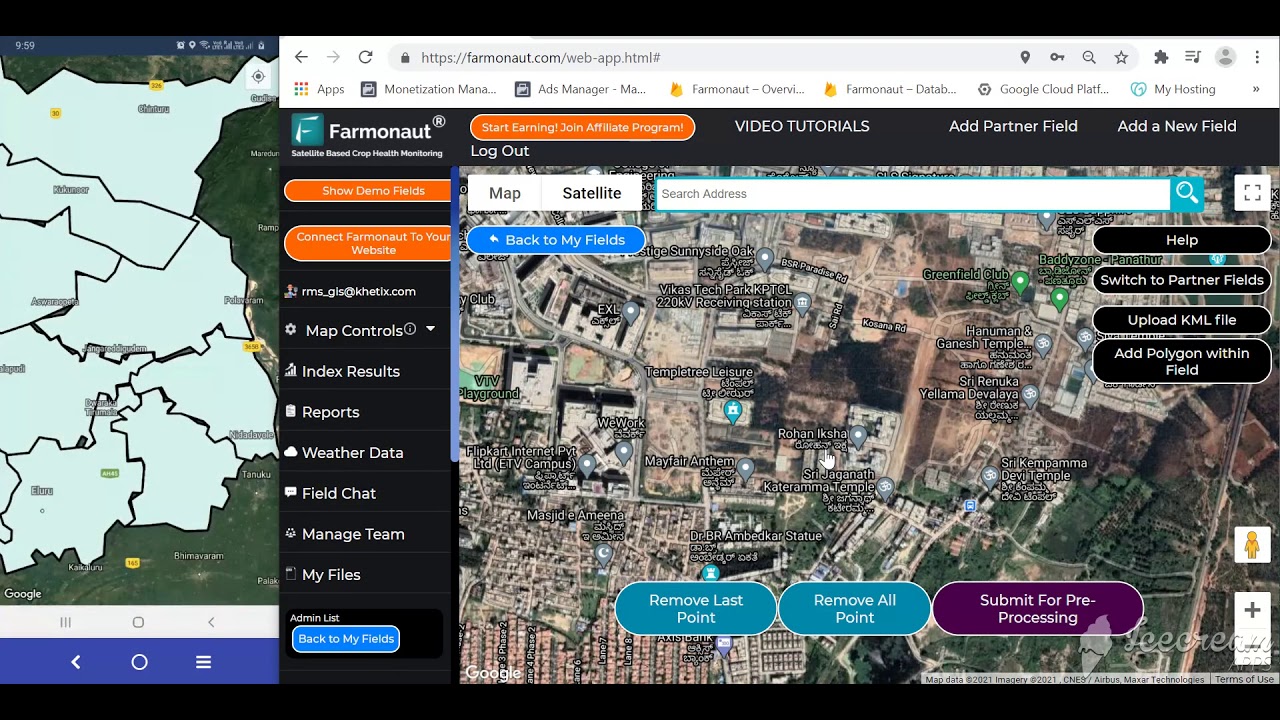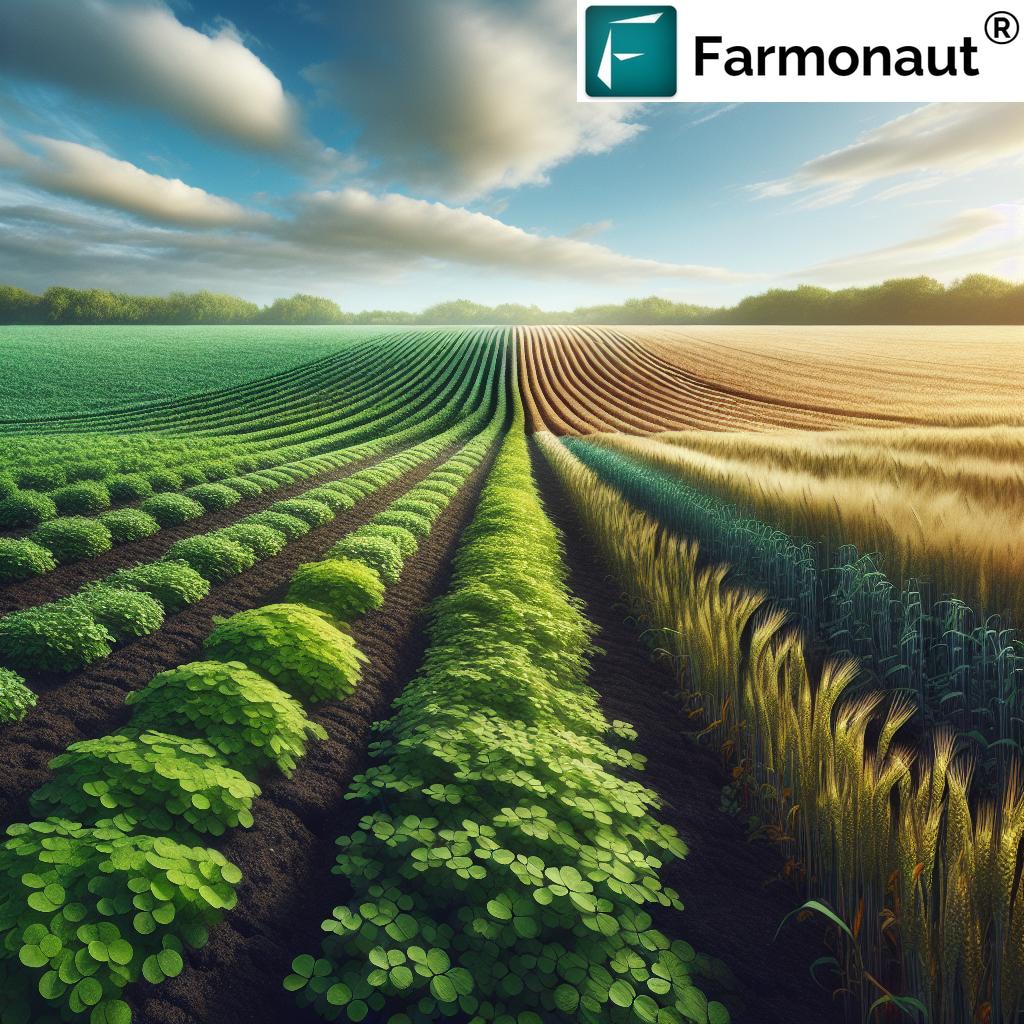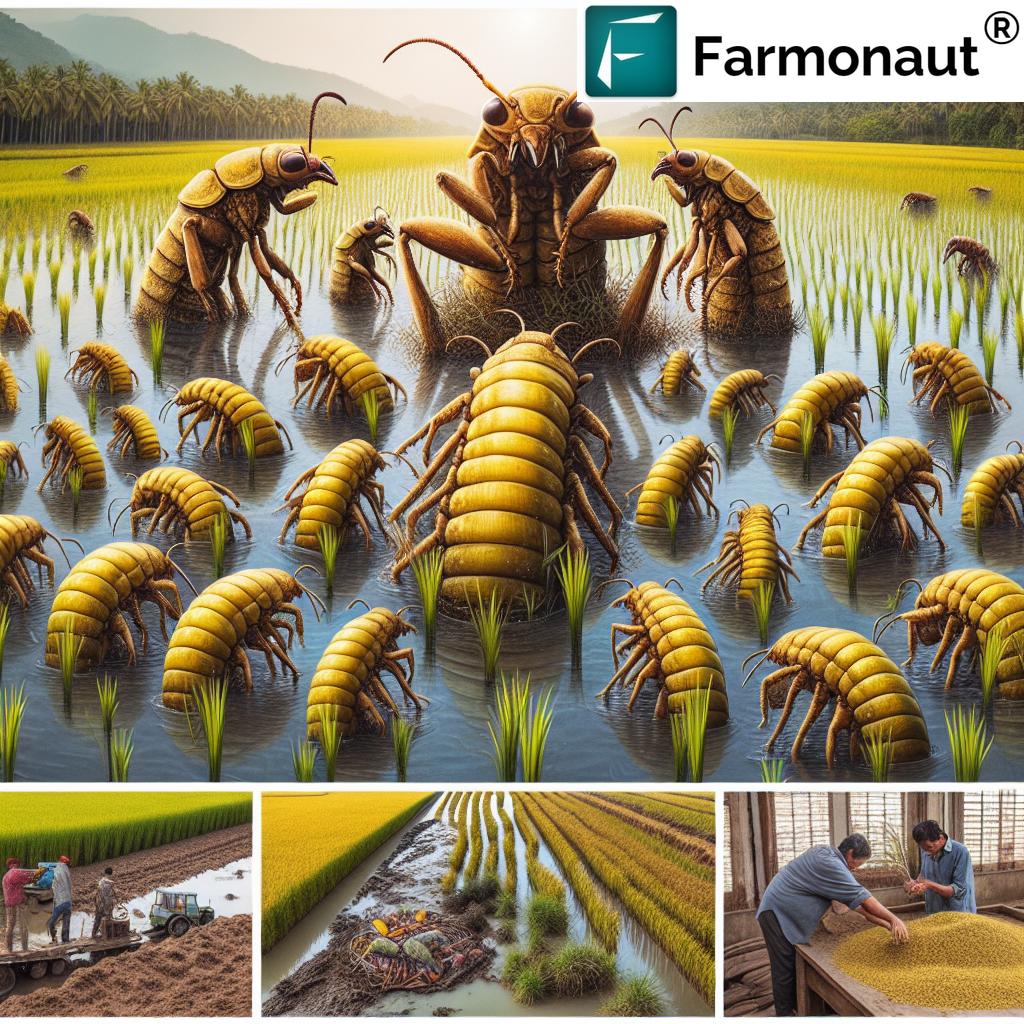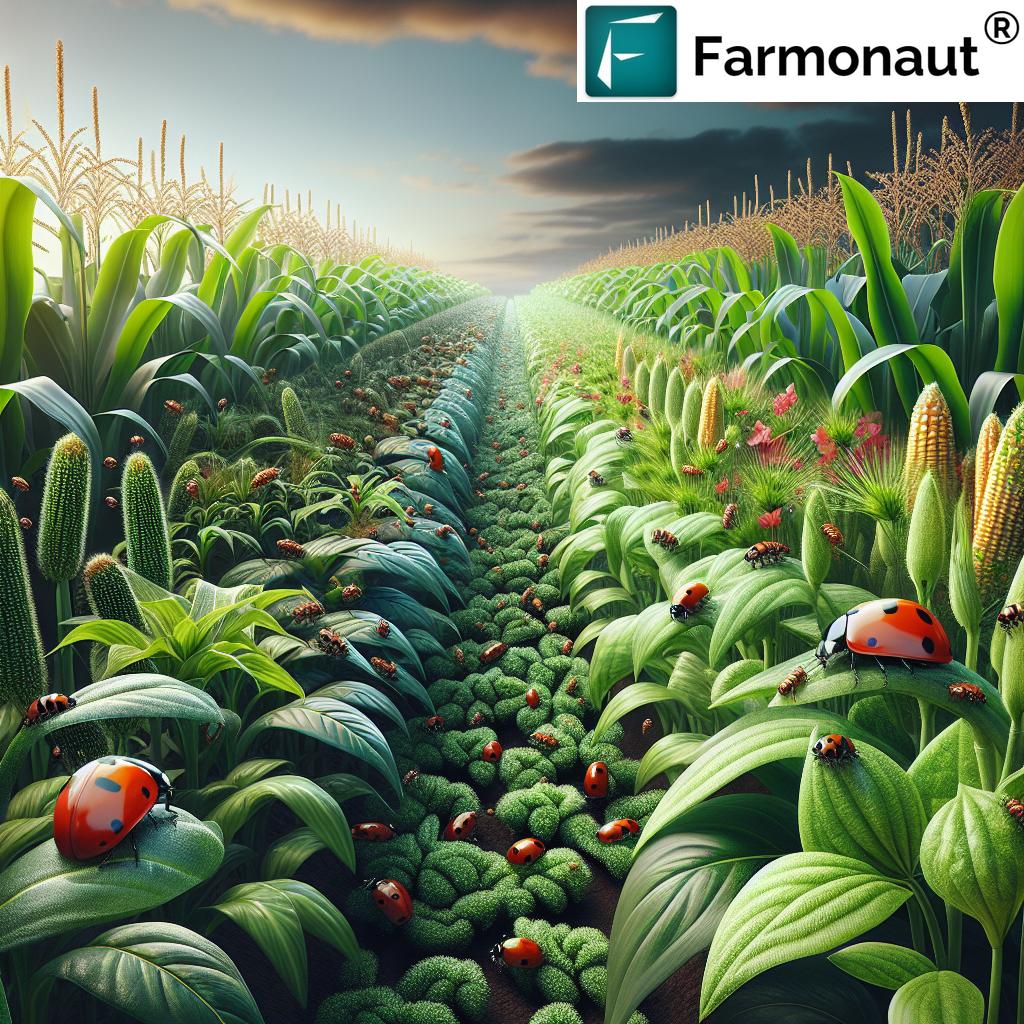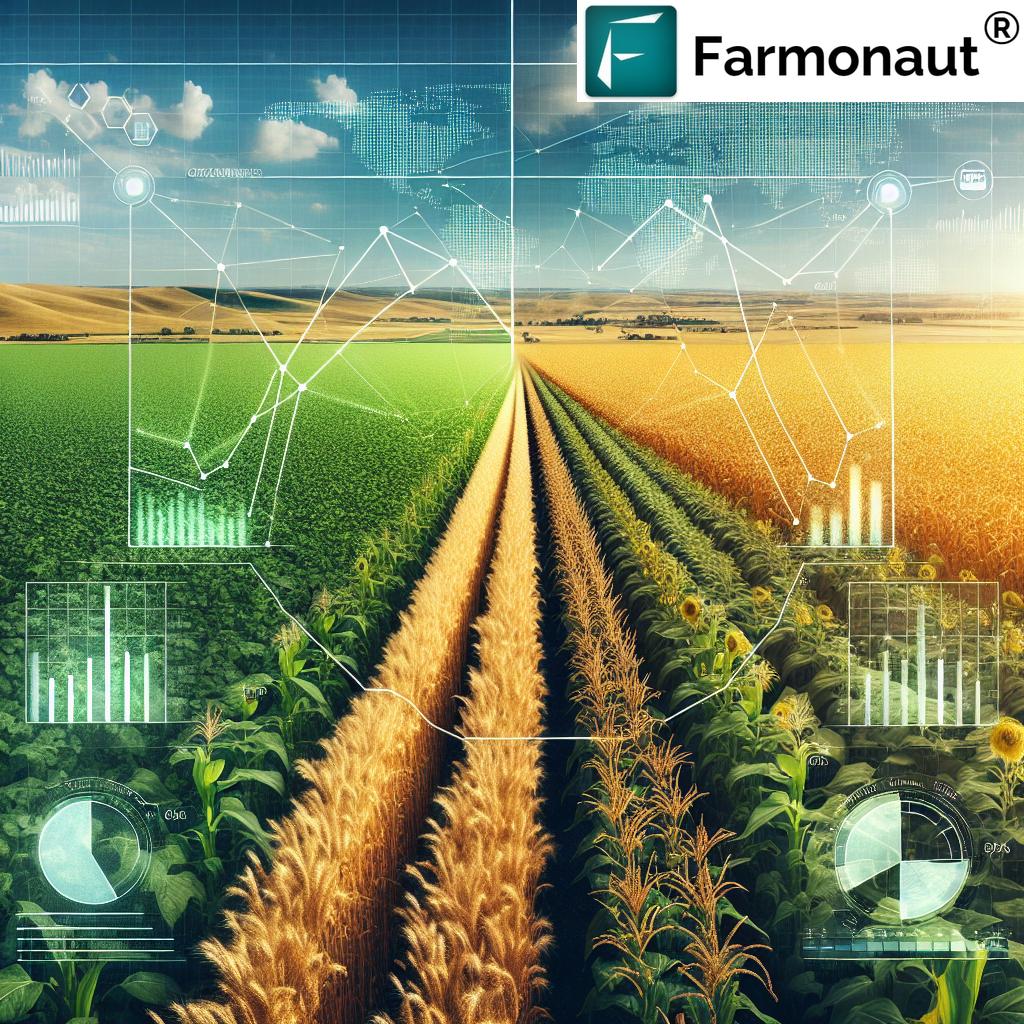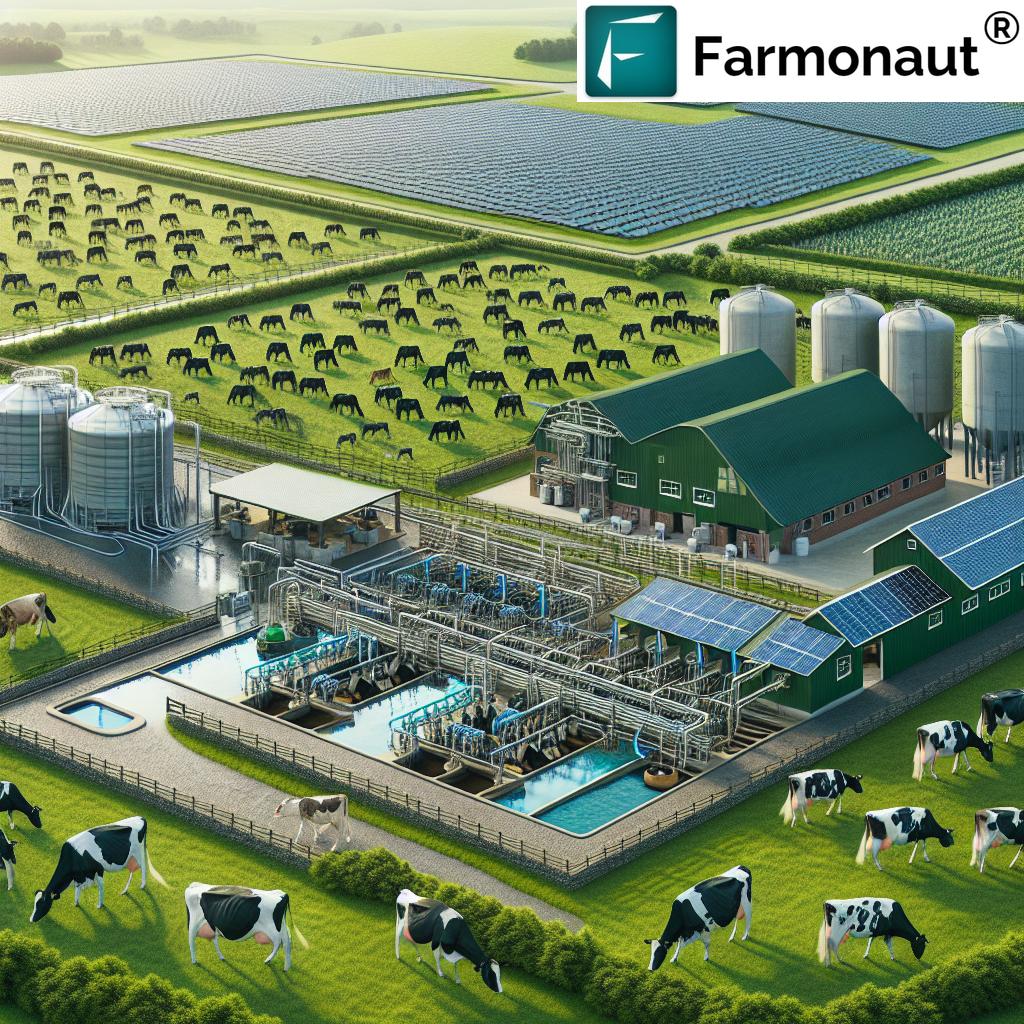Wheat Plant Growth Stages: Essential Guide to High Yields
Introduction: The Importance of Understanding Wheat Growth Stages
Wheat (Triticum aestivum) continues to be one of the world’s most significant staple crops, cultivated across diverse climates and regions. As a primary food source for millions, wheat plays a vital role in the global food supply. Achieving consistently high yields and optimal grain quality depends greatly on a grower’s understanding of wheat growth stages and their specific physiological changes.
From the initial germination process to grain filling and ripening, each stage offers unique management challenges and opportunities. Timely, informed decisions regarding irrigation, nutrient application, and crop protection can significantly boost productivity and sustainability.
In this comprehensive guide, we’ll explore the detailed stages of wheat plant development, the science behind each stage, and actionable wheat crop management tips. Whether you’re an individual farmer, agribusiness, researcher, or agricultural service provider, this resource will help you master the timing of interventions for higher yields, improved grain quality, and more sustainable farming practices.
"Wheat reaches its critical grain-filling stage about 60 days after sowing, directly impacting final yield and quality."
Wheat Plant Development: Overview of Growth Stages
The wheat plant undergoes a sequence of growth stages from seed germination through to senescence. Each phase is defined by key physiological changes and critical events—such as the appearance of new leaves, tillers, heads, and the accumulation of grain. Understanding these phases is the foundation for effective wheat crop management.
- Germination & Seedling Stage: Seeds absorb water; root and coleoptile emerge.
- Tillering: Primary stem produces additional shoots (tillers).
- Stem Elongation: Rapid upward movement and stem growth.
- Booting: Head is enclosed in the sheath of the flag leaf.
- Heading & Flowering (Anthesis): Head emerges; flowering and pollination occur.
- Grain Filling & Ripening: Kernels develop from milky to harvest-ripe.
- Senescence: Physiological aging and nutrient remobilization.
Each stage influences the potential yield and grain quality. In the following sections, we unpack every phase with detailed explanations, optimal management strategies, and practical examples.
1. Germination and Seedling Stage: Wheat Germination Process
The wheat germination process initiates the plant’s life cycle. This stage starts when seeds absorb adequate moisture from the soil, activating enzymatic reactions responsible for metabolism and growth.
Key Steps in Wheat Germination:
- Water Absorption: Seeds take up water and swell, breaking dormancy.
- Emergence of the Radicle: The primary root (radicle) emerges, anchoring the plant.
- Coleoptile Growth: The protective coleoptile sheath pushes upward, safeguarding the initial leaf.
Under optimal conditions—soil temperatures of 12°C to 25°C (54°F–77°F), good seedbed preparation, and adequate soil moisture—seedlings usually emerge within 7 days. Initial growth relies on the energy and nutrients packaged in the seed.
- Key action: Ensure proper seed depth (about 3–5 cm), soil moisture, and seed-to-soil contact.
- Impact: Strong establishment boosts stand uniformity and sets yield potential.
Pro Tip:
Monitoring soil moisture and temperature remotely is possible with satellite-based crop monitoring like Farmonaut’s real-time solutions available on Android, iOS, and web app platforms.
2. Wheat Tillering Stage: Boosting Yield Through Shoots
Once 3–4 leaves are present on the main shoot, the plant enters the critical wheat tillering stage. During this period, the plant begins producing side shoots—tillers—each with its own ability to develop a grain-bearing head.
Why Tillering Matters
- More tillers = more potential heads = higher yield potential
- Optimal tillering occurs at 59°F–68°F (15°C–20°C)
Optimal Management During the Tillering Stage
- Nitrogen and Phosphorus Supply: Both are essential for healthy tiller development. Proper timing and amount are crucial.
- Pest & Disease Monitoring: Because the growing plant is vulnerable during this stage.
- Irrigation Management: Ensure consistent, adequate water supply to prevent moisture stress.
Fun Fact: Applying optimal nitrogen during the tillering stage can increase final yields by up to 20%!
"Optimal nitrogen application during the tillering stage can boost wheat yields by up to 20%."
3. Wheat Stem Elongation Phase: Reaching for the Sun
After sufficient tillering, the plant transitions to the wheat stem elongation phase. Here, internodes on the stem elongate, the plant height increases rapidly, and the forming head (inflorescence) moves up within the stem.
Hallmarks of Stem Elongation
- Visible nodes (jointed points on the stem)
- Rapid increase in water demand and nutrient uptake, especially nitrogen
- High vigour and risk of deficiencies
Timely nitrogen top dressing supports grain development, while stress from water or nutrient deficiencies can severely impact grain number and yield. It’s a critical period for monitoring plant health.
Practical Recommendations
- Monitor crop vigour using NDVI or visual cues for quick intervention
- Fine-tune irrigation and fertilization schedules
- Check for pests and disease hotspots
Farmonaut’s satellite-based monitoring provides detailed, real-time insights into field greenness, soil moisture, and canopy health—empowering more precise wheat management.
4. Booting: The Prelude to Heading
The booting stage occurs when the spike or head is fully formed, yet still enclosed within the sheath of the flag leaf (the final leaf). This is a critical period for determining the final number of grains per head.
- Environmental Sensitivity: The plant is extremely sensitive to water, nutrient, and temperature stress.
- Management Focus: Adequate and timely irrigation, protecting against nutrient deficiencies, and disease control.
- Visual Cue: Swollen flag leaf sheath (the “boot”).
Drought, heat spikes, or nutrient shortages can significantly reduce grain set. Close monitoring is advised for effective management and safeguarding potential yield.
5. Wheat Heading and Flowering (Anthesis)
The heading stage marks the visible emergence of the wheat head through the slit in the flag leaf sheath. This process typically occurs over 3–5 days. Effective crop care is vital here, as the plant transitions to its reproductive phase: wheat flowering (anthesis).
Key Sub-stages (Feekes Scale):
- Feekes 10.1: Awns visible, head just breaking through
- Feekes 10.5: Heading complete, heads fully visible
Flowering (Anthesis):
- Pollination: Wheat is primarily self-pollinating—most florets are fertilized as heads emerge.
- Timing: Flowering typically lasts just a few days; any stress can sharply reduce fertile florets and final grain set.
- Protection: Consider fungicide if disease pressure is high, particularly to protect the flag leaf and head.
Cold snap warning: Exposure to temperatures below –1°C (30°F) at this stage can cause sterility and significant yield loss.
6. Grain Filling in Wheat and Ripening Stages
After successful fertilization at anthesis, the plant starts grain filling—a decisive period for final yield and grain quality. Kernels accumulate starch, protein, and nutrients. The ripening stages follow as the plant transitions towards harvest.
Key Ripening Sub-stages:
- Feekes 11.1 (Milky Ripe): Kernels exude a milky fluid when crushed; the grain is soft.
- Feekes 11.2 (Mealy Ripe): Endosperm is mealy/doughy, grain firming up.
- Feekes 11.3 (Hard Ripe): Kernel is hard; moisture falls to 30–35%.
- Feekes 11.4 (Harvest Ripe): Moisture drops to 15–20%; grain is fully mature, plant begins to senesce.
Grain Filling & Ripening Tips
- Maintain consistent soil moisture to prevent kernel shrinkage.
- Monitor for pests and fungal diseases affecting heads and grain quality.
- Track moisture content closely—delayed harvest increases risk of pre-harvest sprouting and quality loss.
The optimal wheat harvest time is when grain moisture stabilizes around 15–20%, ensuring the highest returns and lowest post-harvest losses.
7. Senescence: The Wheat Plant’s Final Phase
During senescence, the wheat plant undergoes natural aging. Photosynthetic activity declines, and nutrients from the leaves and stem are remobilized into developing kernels.
- The flag leaf often remains green longest, contributing late-stage energy to grains.
- Disease and pest management is essential, as damage at this stage can hurt grain quality.
Effective late-season monitoring ensures the plant completes grain fill and ripens uniformly in preparation for harvest.
Growth Stage Classification Systems: Feekes and BBCH Scales
Consistent classification of wheat growth stages helps farmers and agronomists align monitoring, input decisions, and communicate findings. Two widely used growth stage classification systems for wheat include:
- Feekes Scale: Used extensively in North America; simple stages from seedling emergence to harvest.
- BBCH Scale: More detailed, using numeric codes for every principal and secondary stage, widely adopted in global research and extension. Learn more.
Both systems support precise timing of agronomic interventions, resulting in more effective wheat crop management.
Wheat Growth Stages Overview Table
| Growth Stage | Estimated Duration (Days After Sowing) | Key Characteristics | Essential Actions | Impact on Yield & Quality |
|---|---|---|---|---|
| Germination & Seedling | 0–10 | Seeds absorb water; radicle and coleoptile emerge; first leaf visible | Seedbed prep, ensure soil moisture & temperature, monitor emergence | Uniform emergence sets plant density and yield base |
| Tillering | 11–30 | Main stem produces tillers; 3–4 leaves present | Apply N & P fertilizer; maintain moisture; weed/pest scouting | More tillers increase potential heads and grains per m2 |
| Stem Elongation | 31–50 | Visible nodes; rapid stem growth; head moves up in stem | Topdress N; monitor soil moisture; disease/pest control | Height and vigor set up strong grain filling |
| Booting | 51–60 | Head enclosed in swollen flag leaf sheath | Irrigate; protect from stress; nutrient checks | Stress at booting reduces grain number |
| Heading & Flowering (Anthesis) | 61–65 | Head emerges; flowering & pollination of florets | Apply fungicides if needed; avoid cold/heat stress; ensure water | Impacts grains per head, fertility, and quality |
| Grain Filling & Ripening | 66–110 | Kernels transform: milky → mealy → hard → harvest-ripe | Monitor moisture, disease, pests; plan harvest | Grain weight and final quality determined |
| Senescence | 111–120+ | Plant yellows; leaves die off; nutrient remobilization | Scout for late diseases, time harvest, avoid losses | Proper senescence finishes grain fill; affects storability |
Effective Wheat Crop Management & Precision Monitoring
Optimizing each wheat growth stage requires precise timing and field-wide monitoring—from sowing to harvest. Below are actionable management strategies for each phase:
- Germination & Seedling: Use quality seed and monitor emergence closely. Avoid sowing in overly cold or dry soils.
- Wheat Tillering Stage: Split-apply nitrogen for best uptake; control early diseases and weeds.
- Stem Elongation: Use real-time NDVI and multispectral imaging to flag areas of stress.
- Booting to Heading & Flowering: Prepare to react quickly to heat, drought, and disease alerts—especially for fusarium head blight or rusts.
- Grain Filling & Ripening: Keep watch for aphids, late fungal diseases, or hot dry winds that accelerate ripening.
- Senescence: Harvest at the moisture “sweet spot” (15–20%) for maximum quality and safety.
At every stage, technology is now a grower’s greatest ally. Farmonaut’s precision tools leverage AI and satellite data to catch stress signals and support evidence-based management—directly on your mobile or web dashboard.
Are you building agri-tech solutions? Integrate Farmonaut’s powerful satellite data and weather insights straight into your applications or platforms via the Farmonaut API (developer docs here).
Our Carbon Footprinting solution empowers agribusinesses to track greenhouse gas emissions during every wheat production stage and take steps toward sustainable, climate-smart farming.
Enhance supply chain transparency and consumer trust with blockchain-based traceability solutions—ensuring every kernel of wheat can be traced from field to table.
Leverage satellite-based crop verification for wheat crop loans and insurance, simplifying access to financing while reducing fraud for both farmers and financial institutions.
Large wheat producers and agri-businesses can use large scale farm management apps and fleet management tools to optimize operations, logistics, and resource use for every acre.
Farmonaut: Advanced Solutions for Precise Wheat Crop Monitoring
At Farmonaut, we believe in democratizing precision agriculture for farmers worldwide. By harnessing satellite imagery, AI, and blockchain, our platform delivers cutting-edge tools for real-time crop health monitoring, advisory services, and resource optimization—all accessible from your phone or PC.
- Satellite-Based Crop Monitoring: Instantly assess NDVI, crop vigor, and soil moisture levels for precise wheat management across fields, big or small.
- Jeevn AI Advisory System: Get personalized, dynamic wheat crop management recommendations tuned to your location, weather, and field data.
- Blockchain-Based Traceability: Provide proof of origin and full tracking for wheat grains and flour—critical for food safety and export markets.
- Fleet and Resource Management: Keep wheat harvesters, planters, and vehicles coordinated and reduce logistics costs at scale.
- Environmental & Financial Tools: We help businesses manage carbon emissions, access crop loans, and streamline crop insurance verification with accurate, satellite-verified farm data.
- Accessibility: Our services are available on Android, iOS, and web, designed for both smallholder wheat farmers and global agribusinesses.
Ready to try? Get started here!
FAQ: Wheat Growth Stages and Crop Management
What are the main wheat growth stages?
The main stages are: Germination & Seedling, Tillering, Stem Elongation, Booting, Heading & Flowering (Anthesis), Grain Filling & Ripening, and Senescence.
Why is the tillering stage important in wheat?
It determines the potential number of grain-bearing heads, directly impacting overall yield. Adequate nitrogen and water supply here can improve final output by up to 20%.
When should wheat be harvested for the best grain quality?
At the “harvest-ripe” stage (Feekes 11.4), kernel moisture content is 15–20%. This timing minimizes shattering, mildew, and quality losses.
How does Farmonaut help in wheat crop management?
We offer real-time satellite-based crop monitoring, AI-driven advisory, carbon tracking, and traceability—enabling growers to optimize every growth stage for higher yields and superior wheat quality.
Which growth stage classification system should I use?
Both Feekes (simple) and BBCH (more detailed) are effective. Choose one aligned with local agronomy recommendations or extension guidelines.
Can weather stress at one stage affect the whole crop?
Absolutely. Stress (drought, heat, nutrient deficiency) during booting, heading, or grain filling can reduce yield and kernel quality more than at vegetative stages.
Conclusion: Mastering Wheat Plant Growth for High Yields
Success in wheat production isn’t accidental—it’s rooted in an understanding of the detailed growth stages and strategic wheat crop management at every phase. By aligning agronomic interventions with key development windows—from germination to grain filling—farmers worldwide can unlock higher yields, better grain quality, and greater sustainability.
With the integration of advanced tools like Farmonaut’s satellite monitoring, AI advisory, and precision agriculture apps, today’s growers have unprecedented power to monitor, manage, and maximize their wheat fields. Each season, every field, and every harvest becomes an opportunity for improvement—with data, science, and innovation on your side.
Keep growing smarter. Master every wheat stage for your highest yield yet.


